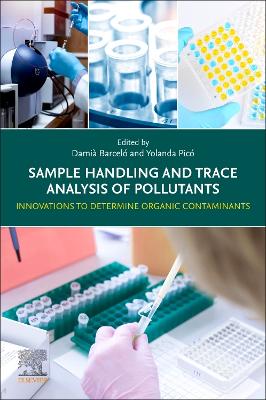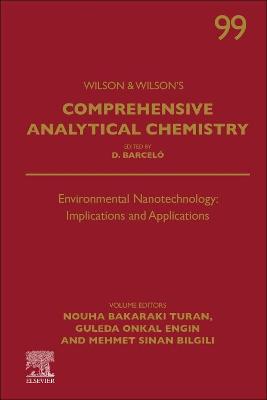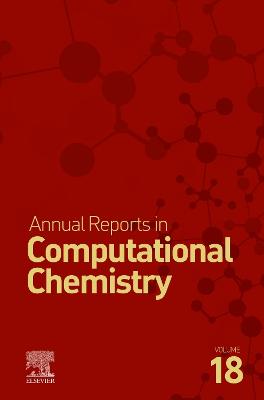Planar Gel Electrophoresis
 -10%
portes grátis
-10%
portes grátis
Planar Gel Electrophoresis
For Protein Separation
Low, Teck Yew
Elsevier - Health Sciences Division
08/2029
586
Mole
Inglês
9780323854733
Pré-lançamento - envio 15 a 20 dias após a sua edição
Descrição não disponível.
Section 1: History, Theory and Milestones
1. Historical backgrounds and milestones
2. Theory and core concepts
3. Different gel chemistry and buffer systems
Section 2: Sample preparation
4. Preparation of protein samples
Section 3: Different electrophoretic techniques
5. SDS-PAGE (Denaturing gels)
6. Non-denaturing gels
7. Non-reducing gels
8. Gradient gels to cover high MW and low MW proteins
9. Separation of low MW peptides with Tris-Tricine gels
10. Agarose Gels for Separating High MW Proteins
11. Preparative gels
12. Acid- urea - triton gel for separating baisc proteins and histones
13. Blue native gels for separating protein complex
14. Pore gradient gel electrophoresis (PGGE)
15. Cationic Electrophoresis
16. Isoelectric focusing (IEF)
17. Immobilized pH gradients (IPG)
18. Two-dimenstional gel electrophoresis (2-DE)
19. Difference gel electrophoresis (DIGE)
20. Diagonal Electrophoresis for disulfide bond detection
21. Affinity gel electrophoresis (AEP)
22. Electrophoretic mobility shift assays (EMSA)
23. Immobilized metal affinity electrophoresis (IMAEP)
24. 1D and 2D zymography (1DZ and 2DZ)
25. SARCOSYL-PAGE: separation of PEGylated proteins
26. Phenylboronate acrylamide gel electrophoresis for glycated proteins
27. Field Inversion gel electrophoresis (FIGE)
28. Microfluidic gel electrophoresis
Section 4: Post-electrophoresis analysis
29. Visualization of gel separated proteins with protein stains
30. Densitometry analysis of protein bands or spots
31. Data analysis software for extracting information from gel separations
32. Recovery of proteins from gel with electroelution
33. In-gel proteolytic digestion of proteins and mass spectrometry
Section 5: Coulping electrophoresis with antibody detection
34. Western Blotting
35. Serological Proteome Analysis (SERPA)
36. Immunofixation Electrophoresis (IFE)
37. Immunoelectrophoresis (IEP)
1. Historical backgrounds and milestones
2. Theory and core concepts
3. Different gel chemistry and buffer systems
Section 2: Sample preparation
4. Preparation of protein samples
Section 3: Different electrophoretic techniques
5. SDS-PAGE (Denaturing gels)
6. Non-denaturing gels
7. Non-reducing gels
8. Gradient gels to cover high MW and low MW proteins
9. Separation of low MW peptides with Tris-Tricine gels
10. Agarose Gels for Separating High MW Proteins
11. Preparative gels
12. Acid- urea - triton gel for separating baisc proteins and histones
13. Blue native gels for separating protein complex
14. Pore gradient gel electrophoresis (PGGE)
15. Cationic Electrophoresis
16. Isoelectric focusing (IEF)
17. Immobilized pH gradients (IPG)
18. Two-dimenstional gel electrophoresis (2-DE)
19. Difference gel electrophoresis (DIGE)
20. Diagonal Electrophoresis for disulfide bond detection
21. Affinity gel electrophoresis (AEP)
22. Electrophoretic mobility shift assays (EMSA)
23. Immobilized metal affinity electrophoresis (IMAEP)
24. 1D and 2D zymography (1DZ and 2DZ)
25. SARCOSYL-PAGE: separation of PEGylated proteins
26. Phenylboronate acrylamide gel electrophoresis for glycated proteins
27. Field Inversion gel electrophoresis (FIGE)
28. Microfluidic gel electrophoresis
Section 4: Post-electrophoresis analysis
29. Visualization of gel separated proteins with protein stains
30. Densitometry analysis of protein bands or spots
31. Data analysis software for extracting information from gel separations
32. Recovery of proteins from gel with electroelution
33. In-gel proteolytic digestion of proteins and mass spectrometry
Section 5: Coulping electrophoresis with antibody detection
34. Western Blotting
35. Serological Proteome Analysis (SERPA)
36. Immunofixation Electrophoresis (IFE)
37. Immunoelectrophoresis (IEP)
Este título pertence ao(s) assunto(s) indicados(s). Para ver outros títulos clique no assunto desejado.
Proteomics; peptide mapping; protein complex; proteoforms; post-translational modification; membrane proteins; biomarker; protein network
Section 1: History, Theory and Milestones
1. Historical backgrounds and milestones
2. Theory and core concepts
3. Different gel chemistry and buffer systems
Section 2: Sample preparation
4. Preparation of protein samples
Section 3: Different electrophoretic techniques
5. SDS-PAGE (Denaturing gels)
6. Non-denaturing gels
7. Non-reducing gels
8. Gradient gels to cover high MW and low MW proteins
9. Separation of low MW peptides with Tris-Tricine gels
10. Agarose Gels for Separating High MW Proteins
11. Preparative gels
12. Acid- urea - triton gel for separating baisc proteins and histones
13. Blue native gels for separating protein complex
14. Pore gradient gel electrophoresis (PGGE)
15. Cationic Electrophoresis
16. Isoelectric focusing (IEF)
17. Immobilized pH gradients (IPG)
18. Two-dimenstional gel electrophoresis (2-DE)
19. Difference gel electrophoresis (DIGE)
20. Diagonal Electrophoresis for disulfide bond detection
21. Affinity gel electrophoresis (AEP)
22. Electrophoretic mobility shift assays (EMSA)
23. Immobilized metal affinity electrophoresis (IMAEP)
24. 1D and 2D zymography (1DZ and 2DZ)
25. SARCOSYL-PAGE: separation of PEGylated proteins
26. Phenylboronate acrylamide gel electrophoresis for glycated proteins
27. Field Inversion gel electrophoresis (FIGE)
28. Microfluidic gel electrophoresis
Section 4: Post-electrophoresis analysis
29. Visualization of gel separated proteins with protein stains
30. Densitometry analysis of protein bands or spots
31. Data analysis software for extracting information from gel separations
32. Recovery of proteins from gel with electroelution
33. In-gel proteolytic digestion of proteins and mass spectrometry
Section 5: Coulping electrophoresis with antibody detection
34. Western Blotting
35. Serological Proteome Analysis (SERPA)
36. Immunofixation Electrophoresis (IFE)
37. Immunoelectrophoresis (IEP)
1. Historical backgrounds and milestones
2. Theory and core concepts
3. Different gel chemistry and buffer systems
Section 2: Sample preparation
4. Preparation of protein samples
Section 3: Different electrophoretic techniques
5. SDS-PAGE (Denaturing gels)
6. Non-denaturing gels
7. Non-reducing gels
8. Gradient gels to cover high MW and low MW proteins
9. Separation of low MW peptides with Tris-Tricine gels
10. Agarose Gels for Separating High MW Proteins
11. Preparative gels
12. Acid- urea - triton gel for separating baisc proteins and histones
13. Blue native gels for separating protein complex
14. Pore gradient gel electrophoresis (PGGE)
15. Cationic Electrophoresis
16. Isoelectric focusing (IEF)
17. Immobilized pH gradients (IPG)
18. Two-dimenstional gel electrophoresis (2-DE)
19. Difference gel electrophoresis (DIGE)
20. Diagonal Electrophoresis for disulfide bond detection
21. Affinity gel electrophoresis (AEP)
22. Electrophoretic mobility shift assays (EMSA)
23. Immobilized metal affinity electrophoresis (IMAEP)
24. 1D and 2D zymography (1DZ and 2DZ)
25. SARCOSYL-PAGE: separation of PEGylated proteins
26. Phenylboronate acrylamide gel electrophoresis for glycated proteins
27. Field Inversion gel electrophoresis (FIGE)
28. Microfluidic gel electrophoresis
Section 4: Post-electrophoresis analysis
29. Visualization of gel separated proteins with protein stains
30. Densitometry analysis of protein bands or spots
31. Data analysis software for extracting information from gel separations
32. Recovery of proteins from gel with electroelution
33. In-gel proteolytic digestion of proteins and mass spectrometry
Section 5: Coulping electrophoresis with antibody detection
34. Western Blotting
35. Serological Proteome Analysis (SERPA)
36. Immunofixation Electrophoresis (IFE)
37. Immunoelectrophoresis (IEP)
Este título pertence ao(s) assunto(s) indicados(s). Para ver outros títulos clique no assunto desejado.







